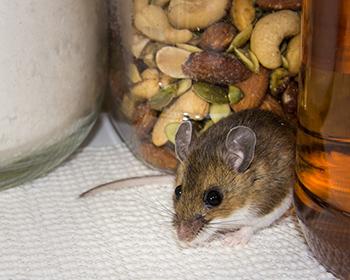Click To Call > (800) 966-7673
Tuesday, October 18, 2022
As the seasons change and temperatures drop, rodents across the Midwest will be vying for a cozy spot in people’s homes. Rose Pest Solutions is seeking to educate homeowners about this threat and help prevent infestation ahead of Rodent Awareness Week, Oct. 16-22.
According to The National Pest Management Association (NPMA), an estimated 21 million U.S. homes are invaded by rodents every year. Since one rodent sighting often indicates that more are living in the house, it is important for homeowners to take action against infestation as early as possible. Female house mice, for example, can produce up to six babies every five weeks.
Rose Pest Solutions offers a variety of services and tips to assist homeowners in eradicating rodents from their houses. Trained professionals, equipped with management techniques, are available for home inspections. The goal of rodent management should always be to physically exclude rodents from the structure, which prevents pest issues while providing maximum protection to children, pets, and other non-target wildlife.
“Rats and mice can be extremely tricky pests to manage once they are familiar with an area,” said Dale Hodgson, BCE, CWCP, regional technical manager at Rose Pest Solutions. “Most homeowners think if a trap is put out, the problem is solved. Occasionally that is true. However, rodents are extremely adaptable pests that are good at exploiting our weaknesses, and just as often a rodent problem requires some real effort and thought to resolve. Never be ashamed to call in a professional for help.”
Rose Pest Solutions offers homeowners the following rodent prevention tips:
Signs that a rodent has taken up residence in a home include droppings, scurrying noises, gnaw marks, damaged food packaging and burrows in secluded areas.

Rodents living under the same roof as humans are a health hazard. Mice and rats can carry over 35 diseases, including Hantavirus, Leptospirosis and lymphocytic choriomeningitis (LCM). Additionally, a buildup of rodent droppings can trigger indoor allergies in humans. The risk of surface contamination is higher with rodents in the house, as mice tend to urinate constantly. Rodents can also cause significant damage to property due to incessant chewing. They will shred stored papers, clothing, artwork or luggage that is left untended. They also chew on drywall, insulation, wood and electrical wiring, which can result in structural damage while increasing the potential risk for fire.
Midwesterners should be on the lookout for the native deer mouse (Peromyscus maniculatus), the house mouse (Mus musculus) and the Norway rat (Rattus norvegicus), all of which are common in the region. The roof rat, though not established in Michigan or Ohio, is also seen in homes on occasion.
The Norway rat and house mouse, both rodents that enter homes, are considered commensal rodents, which are defined as “sharing one’s home.” Commensal rodents live off excesses associated with humans and our domesticated animals. Deer mice, on the other hand, feed on a variety of food found outdoors, but they often nest inside of human structures.